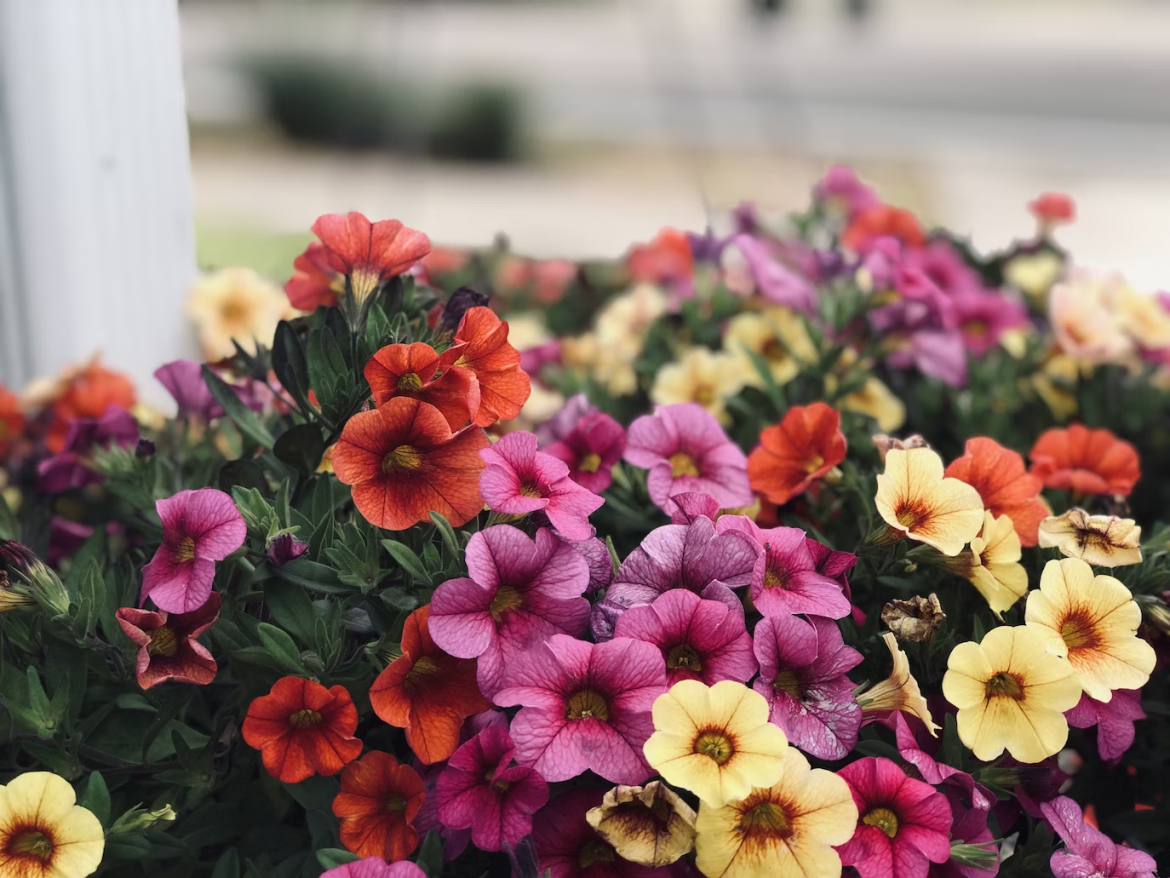Offering a rainbow of hues to elevate your garden aesthetics, petunias are both resilient and delightful. They are versatile and can endure various conditions, making them a favorite among gardeners of all skill levels.
If you’re thinking about adding these charming flowers to your garden, we’re here to help.
This guide will walk you through the essential steps of planting petunias successfully, from preparing the soil for planting to selecting the perfect location.
Taking the time to plant your petunias properly will guarantee their success and add a touch of brilliance to your garden.
So, without further ado, let’s jump right into it.
Soil Preparation
To prepare your soil for planting petunias, you’ll need to loosen it with a garden fork or tiller. This step is important because it allows the roots of the petunias to penetrate the soil easily and access the nutrients they need to grow.
Start by removing weeds and debris from the area where you plan to plant the petunias. Then, use the garden fork or tiller to gently break up the soil.
Be careful not to overdo it; you don’t want to damage the soil structure. Aim for a loose, crumbly texture that will promote good drainage and aeration.
Once you’ve loosened the soil, you can proceed with planting your petunias.
Choosing the Right Location
Find a sunny spot in your garden for your petunias to thrive. These flowers require full sun to grow and bloom at their best.
Here are a few reasons why choosing the right location is crucial for your petunias:
- Sun-kissed beauty: Petunias love basking in the warm sun, and a sunny spot will ensure vibrant and abundant blooms.
- Energy boost: Sunlight provides the energy needed for photosynthesis, promoting healthy growth and strong root development.
- Mood lifter: The sight of colorful petunias under the bright sun can instantly uplift your spirits and bring joy to your day.
- Natural therapy: Spending time in a sunny garden surrounded by petunias can help reduce stress and create a peaceful environment.
Choose your petunia’s spot wisely and enjoy the natural beauty they bring to your garden.
Selecting Petunia Varieties
Selecting the suitable petunia variety for your garden can add a burst of vibrant colors and delightful fragrances. With so many options available, it’s crucial to choose wisely.
Consider the size of your garden and the amount of sunlight it receives.
If you have a small space, opt for compact varieties like the ‘Wave’ or ‘Supertunia’ series. These petunias are perfect for containers and hanging baskets.

If your garden gets full sun, go for the ‘Suncatcher’ or ‘Celebrity’ varieties. They thrive in bright light and will fill your garden with stunning blooms.

For those who prefer fragrance, try the ‘Night Sky’ or ‘Purple Wave’ petunias. These varieties not only look beautiful but also smell divine.

Remember to select petunia varieties that suit your garden’s conditions and your personal preferences.
Petunia Planting Techniques
When planting petunias, consider the spacing between each plant.
Give your petunias enough space to spread out and display their vibrant blooms.
For best results, plant them at least 6-12 inches apart to allow for proper air circulation and prevent overcrowding. This way, you can ensure they have enough room to grow and thrive.
Furthermore, adequate spacing reduces the risk of disease and pests, keeping your petunias healthy.
It also allows sunlight to reach all parts of the plant, promoting strong growth and abundant flowering.
Maintaining and Caring for Petunias
To keep your petunias healthy and vibrant, you must provide them with regular watering and the proper amount of sunlight.
Petunias thrive in full sun, so make sure they receive at least six hours of direct sunlight each day.
Regarding watering, petunias prefer moist but well-drained soil. Watering them deeply is essential, allowing the water to penetrate the root zone.
However, be careful not to overwater, as this can lead to root rot.
To determine if your petunias need water, simply stick your finger into the soil. If it feels dry up to your first knuckle, it’s time to water.
Wrapping Up
Revitalize your garden by introducing vivid and versatile petunias into your planting routine! With a vibrant array of colors and an easy-to-manage growth process, these flowers are perfect for adding cheerful beauty to your home’s exterior.
Follow the practical steps outlined above to provide the best care for your petunias, from soil preparation to regular watering.
Embolden your green thumb, make your choice of petunia variety, and welcome a burst of nature’s finest hues into your garden!
FAQs
Do petunias need to be pruned?
Yes, regular pruning or deadheading can encourage more blooms and keep your petunias looking healthy and neat.
When is the best time to plant petunias?
Petunias are typically planted in the spring after the risk of frost has passed.
Can petunias survive in the shade?
Petunias prefer full sun but can tolerate partial shade. Still, you might notice fewer blooms in a shady spot.
Do petunias attract any specific insects or birds?
Petunias can attract butterflies and hummingbirds, adding to your garden’s biodiversity.
How long do petunias bloom?
With proper care, petunias can bloom from spring until the first frost in autumn.
What should I do if my petunias’ leaves turn yellow?
Yellow leaves could indicate overwatering or a nutritional deficiency. Reduce watering and consider a balanced fertilizer to restore health.
Was it helpful?

Enamored with the world of golf Jack pursued a degree in Golf Course Management at THE Ohio State University. This career path allowed him to work on some of the highest profile golf courses in the country! Due to the pandemic, Jack began Inside The Yard as a side hustle that quickly became his main hustle. Since starting the company, Jack has relocated to a homestead in Central Arkansas where he and his wife raise cattle and two little girls.

